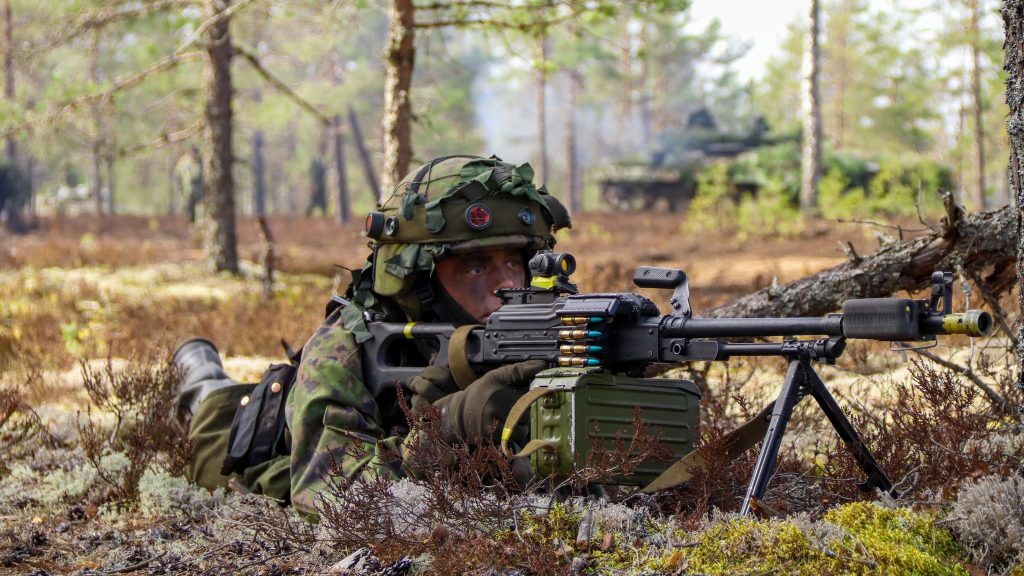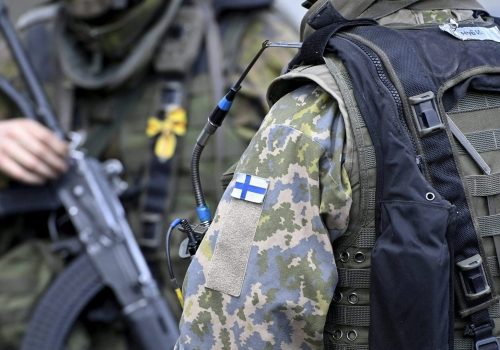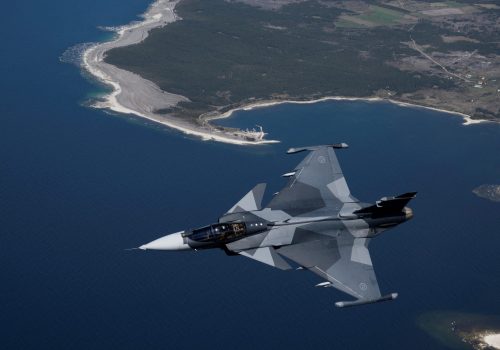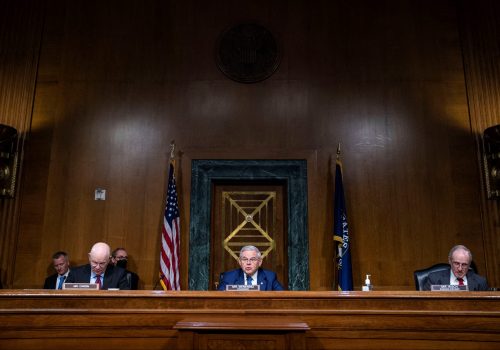
Since its founding, NATO’s key challenge has been ensuring that its members have the military means to fulfill their political commitments to each other. With Finland, which filed its application along with Sweden this week, the Alliance can rest easy: The Nordic nation not only meets the threshold criteria of defense capability for membership, but exceeds it.
The country’s experience since it secured independence from Russia in 1918 has forged a national policy of defense and resilience that would make it both a net contributor to Alliance security and a model for other NATO nations. For Finland, the Cold War never really ended; whereas many in the West divide the late twentieth century into the Cold War and post-Cold War periods, history there is not so easily parsed. Today, the Finns defend an 830-mile border with Russia—the same one with which they gained independence, then successfully defended through sheer force of national will during the Winter War with the Soviet Union.
In response to the reality of Finland’s geographic position, the Finns have developed a clear eyed, determined perspective. As a Finnish diplomat put it to me: “We are concerned, but not afraid.”
That mindset was translated into policy. When the Cold War ended, the United States and its NATO allies slashed their defense budgets, ended conscription, and reduced their total armed forces to cash in their peace dividends. But Finland never had that luxury. Reliant on its own resources for its national security, its defense spending as a percentage of gross domestic product (GDP) has, on average, been remarkably consistent for the last fifty years. It reduced its active-duty military force from 39,000 in 1989 to 23,000 today, but retained its policy of universal conscription for males over 18. It also increased its ability to field a fully equipped force through rapid mobilization from 250,000 to 280,000.
More recently, Finland embarked on a campaign to modernize its fighter aircraft. Last November, the government announced that it would spend nearly ten billion dollars over eight years on sixty-four F-35 fighter jets—a figure more than three times the size of Finland’s entire annual defense budget at the time. Given this investment, the country’s defense budget will exceed the NATO target of 2 percent of GDP and, at 46 percent, will be well above the (arguably more salient) 20 percent target for defense funding on procurement. Shortly after Russia’s invasion of Ukraine, Finland appropriated a more than two-billion-dollar, multi-year fund to accelerate procurement of defense materiel. This funding will push Finland’s defense spending even further above NATO’s targets.
Strong people, sound policy
Throughout the Cold War and thereafter, Finland spent around 1.5 percent of its GDP on defense—a seemingly low amount, given the challenge of providing security for a country of 5.5 million that neighbors Russia, which has a population more than twenty-five times as large. Its answer was to develop a policy of national resilience articulated as Comprehensive Security.
It brings to bear all elements of society—business, education, civil society, the national government, and the armed forces—with the objective of preserving Finnish society in the event of an attack from Russia. Enabled by its policy of universal conscription, the country has developed a nationwide plan for national economic and military mobilization that extends throughout society. Should Finland be attacked, the thinking goes, the entire nation goes to war.
Finland is able to mobilize rapidly to become one of the largest military forces in Europe, putting 5 percent of its population under arms. By comparison, the United States military accounts for only 0.6 percent of the population when fully mobilized; in France, the United Kingdom, and Germany, that figure hovers around roughly 0.3 percent. Already impressive on its own, the Finnish ratio underestimates the full force of the national mobilization of all aspects of society and the economy as represented by the Comprehensive Security policy.
Politically, Finland boasts a robust, multi-party democratic establishment that is firmly grounded in a social spirit of consensus. For the past forty years, its parties have led multi-party coalition governments and have peacefully traded national leadership seven times for an average tenure of 5.7 years—of which none has held control for fewer than three years, and none for longer than eight years.
This kind of relative stability, consensus, and national commitment to defense, has helped prepare Finland for this moment. Against the backdrop of Russia’s invasion of Ukraine, some NATO members are playing catch-up with their defense spending by attempting to recoup underinvestment over the past three decades. These are crucial developments that, if carried through, will strengthen the Alliance significantly.
But Finland has little need to play catch-up: It has persevered for decades on its own, protecting its national security—and now NATO has the opportunity to benefit.
Paul Gebhard is a nonresident senior fellow at the Atlantic Council’s Scowcroft Center for Strategy and Security and a vice president at the Cohen Group in Washington, DC.
Further reading
Fri, May 13, 2022
Why Finland and Sweden can join NATO with unprecedented speed
New Atlanticist By Christopher Skaluba, Anna Wieslander
Both have put in the prescient and painstaking work to make a potential transition from partner to member so straightforward.
Wed, May 18, 2022
Sweden would strengthen NATO with fresh thinking and an able force
New Atlanticist By John R. Deni
Sweden’s unique characteristics could make it a serious security provider—not merely a security consumer—in the heart of Northern Europe.
Tue, May 17, 2022
How the US Senate could slow down Sweden and Finland’s NATO future
New Atlanticist By
Now isn't the time to debate for the sake of debating: The United States and Europe will be safer with Finland and Sweden in the Alliance.
Image: A Finnish solider takes part in an exercise at in western Finland in May 2022. Photo by Maavoimat/EYEPRESS via REUTERS



